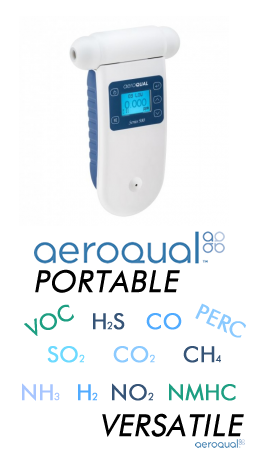Acetone ChromAir Badge (380020-10)
**THIS PRODUCT HAS BEEN DISCONTINUED**
ChromAir chemical exposure badges are a color indicating making them easy to use and perfect for monitoring personnel safety.
The Acetone badge can also be used to monitor Methyl Ethyl Ketone (MEK) and Methyl Isobutyl Ketone (MIBK) by applying a multiplication factor.
Quantity = 10 badges *clips are NOT included*
Acetone Gas Information
Call For Price
Color change for Acetone is from yellow to pink.
The ChromAir acetone badge may be used for personnel or area monitoring for exposure times ranging from 1 minute to 24 hours.
Introduction
Acetone is a colorless liquid with a sharp specific odor (the odor threshold is 4 ppb). It is narcotic in mild concentrations with toxic effects on the central nervous system. Chronic exposure causes mucous membrane irritation,overnight headache and heavy eyes. Acetone is a cumulative poison and can be found in the blood long after exposure. OSHA exposure limit for acetone is 1,000 ppm (TWA). NIOSH exposure limit for acetone is 250 ppm (TWA).
Principle of Operation
The ChromAir passive badge is a patented direct-read autogenic exposimeter. The device is constructed from three cells attached on one side to a flat indicator layer and on the other side to a series of different diffusive resistances. The third cell is connected to the diffusion path with length-of-stain properties. Acetone vapor diffuses to the cells through the different diffusive resistances and reacts with the indicator layer producing color change from yellow to pink. After saturation of the third cell, the color change creeps along the length-of-stain diffusion path producing a sharp diffusion front. The color produced on the indicator layer, as spots and length-of-stain, is a direct measure of the exposure dose. Visual color comparison is achieved by: (1) observing the formation of the pink threshold color on the individual cell and reading the corresponding exposure dose, or (2) for doses exceeding 1,500 ppm.hr, reading the length-of- pink-stain from the scale.
Pictured above is the additional color comparator that is used for higher resolutions and accuracy (available for Carbon Monoxide, Formaldehyde, Mercury).
Operating Instructions
1. Remove the pouch from refrigerator and allow it to warm to room temperature.
2. Remove the badge from its protective pouch.
3. Enter all pertinent information on the I.D. label before monitoring is started (i.e. name, location, date and start time).
4. For personnel monitoring, attach the badge near the user's breathing zone (i.e. collar) with the front side exposed to the surrounding atmosphere.
5. For area monitoring, attach the badge to a stand and mount in a centralized area with the front side exposed to the surrounding atmosphere.
6. Check the back side of the badge periodically to determine the exposure dose (ppm•hr).
7. To read the badge, locate the highest level cell with pink threshold color. If the exposure dose exceeds 1,500 ppm•hr, locate the pink color front in the length-of-stain diffusion path.
8. For MEK exposure dose, multiply the dose printed on the badge by 0.9.
9. For MIBK exposure dose, multiply the dose printed on the badge by 0.8.
10. To obtain the average concentration (ppm) in the surrounding atmosphere, divide the exposure dose (ppm•hr) by the exposure time in hours.
EXAMPLE: If the sampling time is 2 hours and the badge reads 400 ppm•hr, the average concentration is determined by: 400 ppm•hr Therefore the average concentration is 200 ppm.
Storage
The ChromAir acetone monitor should be refrigerated in its sealed bag at all times.
Sampling Parameters
|
Color Change |
yellow to pink |
|
Exposure range |
20 - 24,000 ppm•hr |
|
Maximum recommended sampling time |
24 hours |
|
Minimum recommended sampling time |
1 minute |
|
Relative humidity range |
15% - 95% |
|
Face velocity range |
10 - 165 cm/sec |
|
Temperature range |
10ºC - 45ºC (50ºF - 113ºF) |
|
Light effect - UV (direct sunlight) |
not recommended |
|
Light effect - visible |
no effect |
|
Refrigerated shelf life |
1 year |
Downloads and Links
| Manufacturer | Morphix |
|---|---|
| Call For Price | No |
| Gas | Acetone, Methyl Ethyl Ketone, Methyl Isobutyl Ketone |
| Standard Range | 20 - 24,000 PPM |
| Operational Temperature Range | 10ºC - 45ºC (50ºF - 113ºF) |
| Operational RH Range | 15% - 95% |
| Unit Features | - Read exposure dose results directly from the badge - Determine exposure dose throughout sampling period - Detection with practical and relevant range - Use for Short Term Exposure Limit (STEL) or Time Weighted Average (TWA) |


















